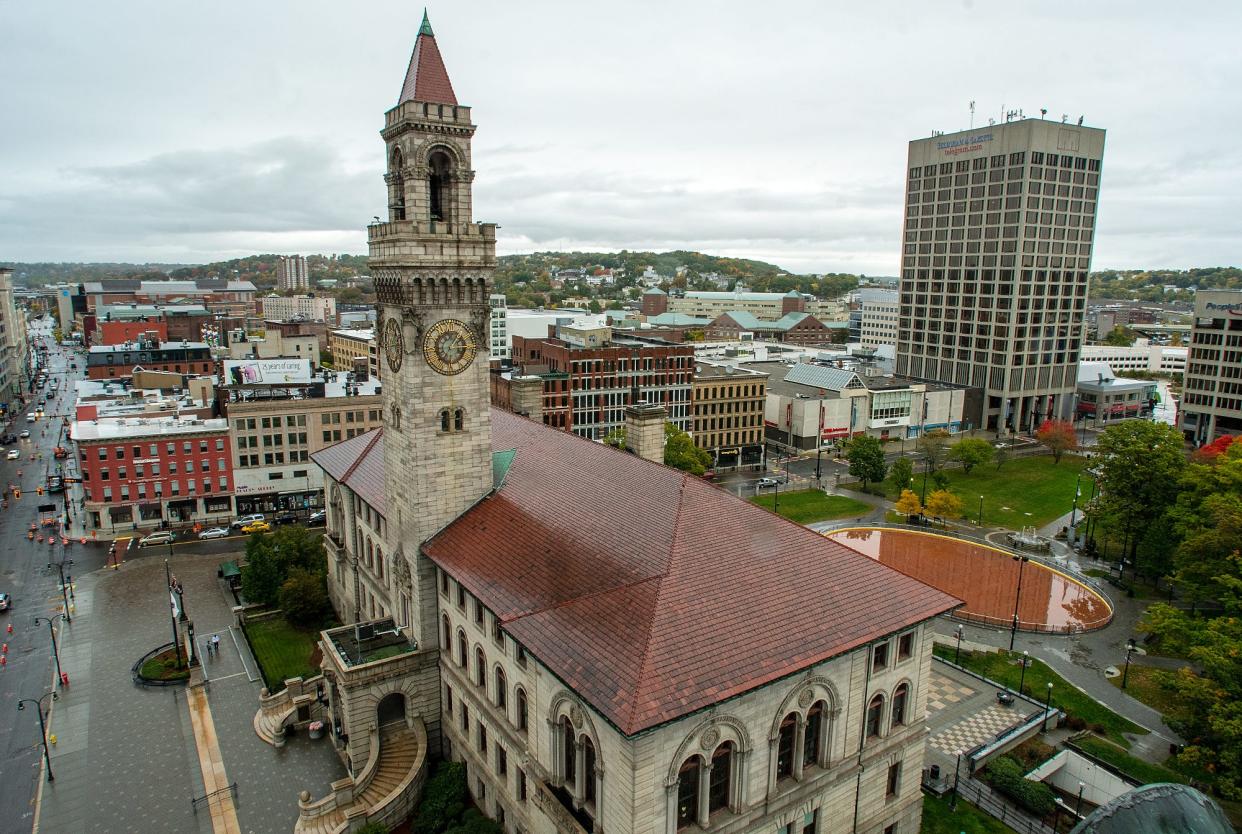As city shelters overflow, councilors get creative to find funding and housing

WORCESTER — As the number of people who are homeless continues to rise and shelters overflow, city councilors are looking for new methods and funding to help house people who are unsheltered.
“I appreciate that they’re not turning people away and saying we’re at capacity,” District 4 Councilor Sarai Rivera said at the council’s meeting Tuesday evening, emphasizing that she meant “no shade” at the work of the emergency shelters in the city.
But she initiated the discussion with her request to convene stakeholders for a meeting on the “sheltering process in the city, in an effort to make improvements to said process and address the various needs of the individuals being sheltered.
“But at the same time…they are at and over capacity on a daily basis,” Rivera said. “We can’t just keep expanding what we have because it’s not working.”
The Central Massachusetts Housing Alliance counted 577 total adults who are homeless in Worcester in November 2021 and 586 total adults who are homeless in November 2022. But while the total may not have risen that much between the two dates, the number of unsheltered homeless has increased dramatically. Of the 577 total adults who were homeless in November 2021, 155 were unsheltered, according to CMHA. Of the 586 total adults who were homeless in November 2022, 226 were unsheltered.
“But at the same time…they are at and over capacity on a daily basis. We can’t just keep expanding what we have because it’s not working.”
District 4 Councilor Sarai Rivera
Emergency shelters in the city have expanded by 130 beds to meet the growing demand, according to city data. Even with the expansion, however, the city still only has 229 shelter beds - 154 of which are in just two locations run by the South Middlesex Opportunity Council.
“The issue really is around how many people we’re putting in these locations,” District 2 Councilor Candy Mero-Carlson said. “Certainly being warm and being on the floor is better than on the streets, but I think we can do better to offer people a clean, warm and safe place to sleep.”
Meanwhile, district councilors have said that those beds along with services used by people who are homeless are overwhelmingly located in certain neighborhoods, particularly near Lincoln Plaza and in Main South, and advocated for a more equitable distribution of shelters and services for people who are homeless.
'Doing the right thing'
“Districts 2 and 4 have really borne the brunt of what has taken place with the homeless population and its challenges,” Mero-Carlson said. “District 2 has never said (Not In My Backyard)…It’s not about NIMBY. It’s about doing the right thing by those who are most vulnerable.”
Rivera agreed.
“If we’re the Heart of the Commonwealth, all parts of the city should be beating for everyone,” Rivera said. “It’s about dignity. We can’t be in this NIMBY capacity.”
At-Large Councilor Thu Nguyen said that city leaders should be “advocating up” and get state and national leaders to help address the homelessness issue.
“As a city, I think we have a lot of work to do,” Nguyen said. “But we really need to start advocating upwards to the state and federal level…It’s a national issue and we really need to get resources to Worcester.”
At-Large Councilor Khrystian King agreed, asking the city administration for further information on money the city gets for housing to help “figure out how we as body and administration can perhaps advocate differently.”
At-Large Councilor Kate Toomey also agreed that homelessness was an issue that spread beyond Worcester’s borders.
“I’m looking at this more as a regional or state issue,” Toomey said, noting that she currently works helping formerly incarcerated people find housing. “We know people are coming to Worcester because we have services. They are being sent to Worcester and certainly want to care for and help them, but we don’t want to be the sole bearer of costs for it.”
More housing and shelters needed
Meanwhile, District 1 Councilor Sean Rose urged the city to think creatively and work with developers to build housing or create shelters at underused locations in the city.
“I think a big challenge we have, of course, is land, space, infrastructure; yet I drive around and see empty parcels and the opportunity to get creative,” Rose said. “We want to leave no stone unturned.”
But District 5 Councilor Etel Haxhiaj pushed back on any notion that the city’s goals of creating permanent supportive housing were not working.
“Permanent supportive housing works,” Haxhiaj, who noted she works as a housing practitioner, said.
She further noted the “fierce” pushback and NIMBYism councilors receive whenever they try to change zoning or bring new services for the homeless into a neighborhood.
“I’d like to envision a place where each of our neighborhoods have permanent supportive housing,” Haxhiaj said. “But until we get there, I want to make sure we’re centering best practices.”
This article originally appeared on Telegram & Gazette: As city shelters overflow, councilors seek funding and housing to help

